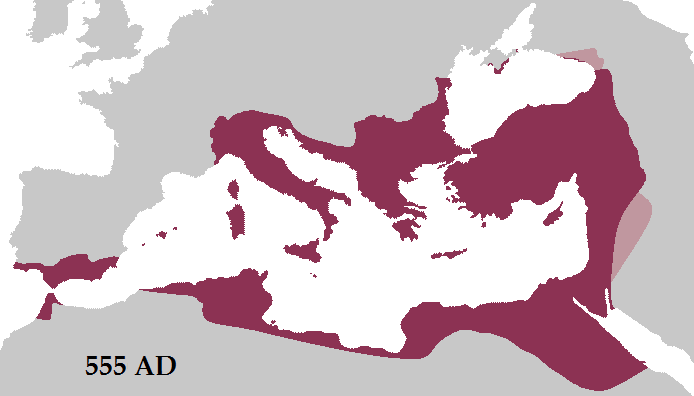A long time has passed since I have reviewed some documentary film. Today, I watched an interesting documentary made by History Channel - Engineering an Empire The Byzantines.
I must admit that now I feel more educated about ancient history.
In this documentary is covered the time period from the founding of Constantinople (present-day Istanbul) 330 AD, till falling of Constantinople in 1453.
Santa Claus originates from Ancient Byzantine Empire.
In this documentary I learned an interesting fact that present-day Santa Claus origins are coming from Byzantine Empire:
Saint Nicholas (15 March 270 – 6 December 343), also called Nikolaos of Myra, was a historic 4th-century Christian saint and Greek Bishop of Myra (Demre, part of modern-day Turkey). Because of the many miracles attributed to his intercession, he is also known as Nikolaos the Wonderworker.
He had a reputation for secret gift-giving, such as putting coins in the shoes of those who left them out for him, a practice celebrated on his feast day―St Nicholas Day (6 December, Gregorian calendar, in Western Christianity and 19 December, Julian calendar, in Eastern Christianity) and thus became the model for Santa Claus
About Byzantine Empire
The Byzantine Empire, alternatively known as the Eastern Roman Empire, was the predominantly Greek-speaking eastern half and the remainder of the Roman Empire during Late Antiquity and the Middle Ages.
Its capital city was Constantinople (modern-day Istanbul), originally founded as Byzantium. It survived the fragmentation and fall of the Western Roman Empire in the 5th century AD and continued to exist for an additional thousand years until it fell to the Ottoman Turks in 1453.
During most of its existence, the empire was the most powerful economic, cultural, and military force in Europe. Both "Byzantine Empire" and "Eastern Roman Empire" are historiographical terms created after the end of the realm; its citizens continued to refer to their empire as the Roman Empire, or Romania, and to themselves as "Romans".
Several events from the 4th to 6th centuries mark the transitional period during which the Roman Empire's east and west divided. In 285, the emperor Diocletian (r. 284–305) partitioned the Roman Empire's administration into eastern and western halves.
Between 324 and 330, Constantine I (r. 306–337) transferred the main capital from Rome to Byzantium, later known as Constantinople ("City of Constantine") and Nova Roma ("New Rome").
Under Theodosius I (r. 379–395), Christianity became the Empire's official state religion and others such as Roman polytheism were proscribed.
And finally, under the reign of Heraclius (r. 610–641), the Empire's military and administration were restructured and adopted Greek for official use instead of Latin.
Thus, although it continued the Roman state and maintained Roman state traditions, modern historians distinguish Byzantium from ancient Rome insofar as it was oriented towards Greek rather than Latin culture, and characterised by Orthodox Christianity rather than Roman polytheism.
The borders of the Empire evolved significantly over its existence, as it went through several cycles of decline and recovery. During the reign of Justinian I (r. 527–565), the Empire reached its greatest extent after reconquering much of the historically Roman western Mediterranean coast, including north Africa, Italy, and Rome itself, which it held for two more centuries.
During the reign of Maurice (r. 582–602), the Empire's eastern frontier was expanded and the north stabilised. However, his assassination caused a two-decade-long war with Sassanid Persia which exhausted the Empire's resources and contributed to major territorial losses during the Muslim conquests of the 7th century. In a matter of years the Empire lost its richest provinces, Egypt and Syria, to the Arabs.

Location of Byzantine Empire 555 AD by Tataryn77 - Own work. Licensed under CC BY-SA 3.0
During the Macedonian dynasty (10th–11th centuries), the Empire again expanded and experienced a two-century-long renaissance, which came to an end with the loss of much of Asia Minor to the Seljuk Turks after the Battle of Manzikert in 1071. This battle opened the way for the Turks to settle in Anatolia as a homeland.
The final centuries of the Empire exhibited a general trend of decline. It struggled to recover during the 12th century, but was delivered a mortal blow during the Fourth Crusade, when Constantinople was sacked and the Empire dissolved and divided into competing Byzantine Greek and Latin realms.
Despite the eventual recovery of Constantinople and re-establishment of the Empire in 1261, Byzantium remained only one of several small rival states in the area for the final two centuries of its existence. Its remaining territories were progressively annexed by the Ottomans over the 15th century. The Fall of Constantinople to the Ottoman Empire in 1453 finally ended the Roman Empire.